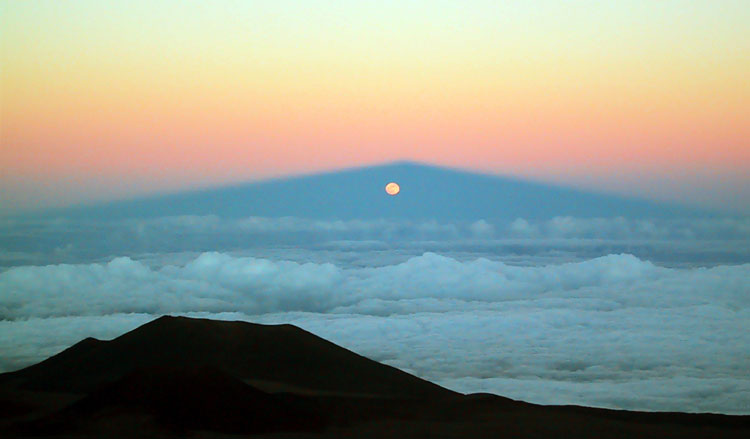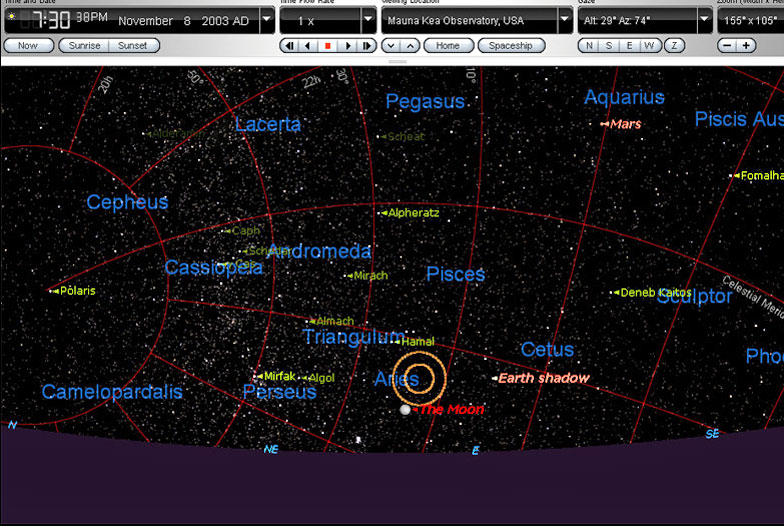
|
 |
|
|
|
Image Index |
Michael
Connelley's image of Mauna Kea's shadow shows an almost full moon
rising. It makes the point that the mountain shadow extends through the atmosphere
rather than being cast upon the clouds.
Image
©Michael Cnnelley, shown with permission.
The tip of the mountain shadow marks the antisolar point. The Earth's shadow itself converges on this point. It also extends far beyond the Moon. Why then is the Moon not eclipsed? Dale Ireland (site) provides the explanation: "At the Moon's distance the Earth's
shadow is just a few Moon diameters wide and it is located at the same place
as the apex of the mountain shadow. In the image the (almost) full moon is just outside the Earth's shadow. This happens at most full
moons. The moon passes above or below the Earth's shadow or umbra. If it
hits the earth's shadow then there is a lunar eclipse.". Dale further researched when the image was taken - "It appears to match up with the moonrise of 08 Nov 2003 (09 Nov UT) which was actually just after the end of a lunar eclipse. Here is a map of the moment. The orange circles mark the position of the Earth's shadow umbra and penumbra at the distance of the Moon." |

|
 |
|
|
 
|
|


